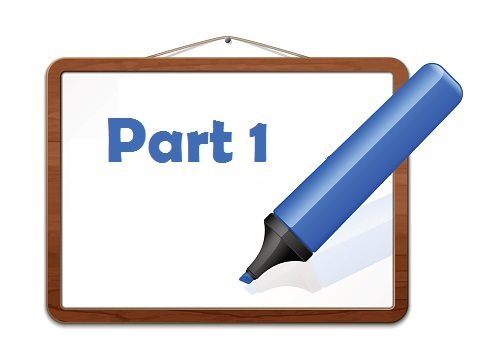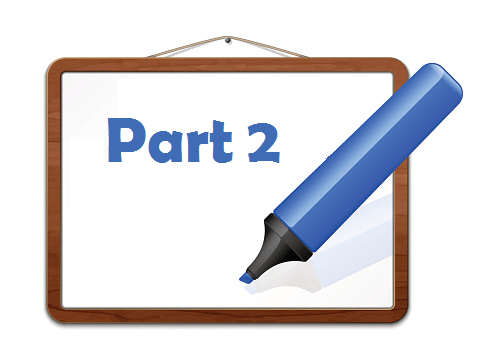Before going through the nine-step approach, a word of advice for the candidates:
- It is advised that the candidates attempt one part of an examination at a time to reduce the workload and stress and to increase the chances of successful completion of that part.
- In addition to the courses and pedagogy offered by the university, it is advised that the candidates use the CMA and the CPA review program study materials.
- Taking additional finance-related courses for extra credits will benefit the candidate during preparation.
- Candidates should complete both parts of the CMA examination while they are still undergraduate students.
Given below are nine steps candidates can follow in order to successfully complete both the CMA and the CPA examinations and obtain the license thereafter:
Step 1: During the Junior Year
When the candidate is in the junior (first) year of his or her undergraduate degree, he or she can complete the intermediate accounting courses, a course on information systems, corporate finance, operations management, business ethics, and possibly a finance subject that is relevant. The ICMA expects that candidates who are accounting undergraduate students would have finished courses in economics and statistics by the end of their first year. The CMA examination is set assuming that the candidate has knowledge about statistics, business economics, concepts on time-value of money. Most of the mentioned subjects/topics are heavily covered in Part 2 (Financial Decision Making) of the CMA examination.
Step 2: After the Junior Year
After the candidate’s first year of the undergraduate degree is completed, he or she may utilise the CMA review program study materials to prepare for Part 2 of the CMA examination, which covers Financial Decision Making. He or she can then attempt Part 2 of the examination in late May or June post preparation.
Step 3: First Semester, Senior Year
When the candidate is in the first semester of his or her senior (final) year of the undergraduate degree, he or she would have studied about cost accounting, advanced managerial accounting, and auditing in the respective courses. The candidate might also have completed a business capstone course which are basically case studies that require the candidate to apply and integrate theoretical knowledge and concepts and come up with practical solutions. The skills of application and integration are heavily tested in Part 1 of the CMA examination, which covers Financial Reporting, Planning, Performance, and Control. If a business capstone course is not offered at the university, the candidate may opt for a finance-related case study that requires application and integration skills. Part 1 of the CMA examination contains questions that test the knowledge of candidates on topics that he or she would have a strong foundation of after a three-year undergraduate degree in accounting.
Step 4: First Semester Break/Winter Break, Senior Year
When the college breaks after the first semester (or winter break, whatever the case may be), the candidate can use this time to study for Part 1 of the CMA examination with the help of the CMA review program study materials. This is if he or she plans to attempt Part 1 in late January/early February. This period is recommended for preparation as there is minimal workload from the university, and/or it is before assignments for the next semester start pouring in. By doing this, the candidate would have completed one part of the examination—if successful—before his or her graduation in April/May. This is a commendable feat on the part of the candidate, and thus he or she will be motivated to prepare for the second part of the examination with more zest and intensity.
Step 5: Second Semester, Senior Year
While the candidate is in the second semester of the final year, it is expected that he or she will have courses related to tax, business law, and advanced financial accounting, among others. If the university does not offer such courses, it is advised that the candidate does a course related to tax in the first semester of the senior year. In an ideal scenario, the candidate must have done two tax courses—one on individual taxation; and the other on business-entity taxation. If possible, the candidate should take one course on taxation per semester. On a side note, an additional course on auditing would be useful for the candidate.
Step 6: After Graduation (April-May)
After the candidate’s graduation in April/May and the successful completion of the CMA examination, it is advised that he or she immediately apply for the BEC and the REG parts of the CPA examination and then relax for a week or two.
Step 7: After Graduation (June)
During the month of June, the candidate must start preparing for the BEC part of the CPA examination, i.e. Business Environment and Concepts, via the CPA review program study materials. For the examination scheduled in July, the preparation time for BEC is comparatively shorter since there are overlapping topics such as operations management, financial management, and information systems that have already been tested upon in the CMA examination.
Step 8: After Graduation (July-August)
Post taking the BEC part of the CPA examination, the candidate should utilise the remaining days of July and early days of August by preparing for the REG part of the examination. The candidate may use the CPA review program study material for the same. If the candidate had taken a course on business law and other relevant courses related to tax, he or she may find the content in the REG part to be 75-90% related to those courses. The candidate should schedule the REG part of the examination at the end of August.
Step 9: After Graduation (October-November)
This is the most challenging period of the year, as the candidate’s real mettle will be put to the test. Having completed advanced financial accounting and auditing courses in the final year, the candidate should use the month of September and early October to prepare for the AUD and FAR parts of the CPA examination, parallelly. The same content is tested in both parts, which includes analytical procedures, ratio analysis, and preparation of financial statements according to the US GAAP, among others. In this case, too, many of the topics are overlapped and have already been tested on in the CMA examination, which will make the preparation for the candidate easier. The candidate should schedule AUD in late October and FAR in late November. If both parts are successfully completed, the candidate would have completed all the parts of the CPA examination within six months of graduation, which is a major achievement.
The nine-step approach is a highly ambitious way of pursuing the dual certification; its challenging nature may not appeal to all candidates. However, it may appeal to candidates who are highly motivated, and to those candidates who plan to pursue their postgraduate degree right after their undergraduate degree to obtain the required 150 credit hours. Undergraduate students of accounting are ideal candidates for this approach, given they take up additional, relevant courses.
Universities may consider incentivising its students who pursue the dual certification by offering them some kind of discount in examination costs. For example, the IMA grants scholarships to candidates who are outstanding students in the accounting stream and offers them substantial discounts to undertake the CMA examination. By helping students financially, the university may benefit in three ways:
- High success rates in the examination are a direct testament to the quality of pedagogy in universities offering undergraduate degrees in accounting.
- Seeing the support given by the universities, there may be an increase in the number of students enrolling for their undergraduate accounting degrees.
- Students who have successfully completed the CMA examination before getting a job or studying further will have a competitive advantage and will stand out among other candidates for a particular job. This will increase the employers’ demand for students from a particular university.






